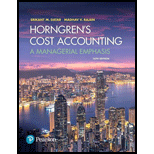
Multinational transfer pricing, effect of alternative transfer-pricing methods, global income tax minimization. Tech Friendly Computer, Inc., with headquarters in San Francisco, manufactures and sells a desktop computer. Tech Friendly has three divisions, each of which is located in a different country:
- a. China division—manufactures memory devices and keyboards
- b. South Korea division—assembles desktop computers using locally manufactured parts, along with memory devices and keyboards from the China division
- c. U.S. division—packages and distributes desktop computers
Each division is run as a profit center. The costs for the work done in each division for a single desktop computer are as follows:
| China division: | Variable cost = 900 yuan |
| Fixed cost = 1,980 yuan | |
| South Korea division: | Variable cost = 350,000 won |
| Fixed cost = 470,000 won | |
| U.S. division: | Variable cost = $125 |
| Fixed cost = $325 |
- Chinese income tax rate on the China division’s operating income: 40%
- South Korean income tax rate on the South Korea division’s operating income: 20%
- U.S. income tax rate on the U.S. division’s operating income: 30%
Each desktop computer is sold to retail outlets in the United States for $3,800. Assume that the current foreign exchange rates are as follows:
Both the China and the South Korea divisions sell part of their production under a private label. The China division sells the comparable memory/keyboard package used in each Tech Friendly desktop computer to a Chinese manufacturer for 4,500 yuan. The South Korea division sells the comparable desktop computer to a South Korean distributor for 1,340,000 won.
- A. Calculate the after-tax operating income per unit earned by each division under the following transfer-pricing methods: (a) market price, (b) 200% of full cost, and (c) 350% of variable cost. (Income taxes are not included in the computation of the cost-based transfer prices.)
- B. Which transfer-pricing method(s) will maximize the after-tax operating income per unit of Tech Friendly Computer?
Want to see the full answer?
Check out a sample textbook solution
Chapter 22 Solutions
Horngren's Cost Accounting: A Managerial Emphasis (16th Edition)
- What Is the correct answer A B ?? General Accounting questionarrow_forwardCullumber Company uses a job order cost system and applies overhead to production on the basis of direct labor costs. On January 1, 2025, Job 50 was the only job in process. The costs incurred prior to January 1 on this job were as follows: direct materials $16,800, direct labor $10,080, and manufacturing overhead $13,440. As of January 1, Job 49 had been completed at a cost of $75,600 and was part of finished goods inventory. There was a $12,600 balance in the Raw Materials Inventory account on January 1. During the month of January, Cullumber Company began production on Jobs 51 and 52, and completed Jobs 50 and 51. Jobs 49 and 50 were sold on account during the month for $102,480 and $132,720, respectively. The following additional events occurred during the month. 1. Purchased additional raw materials of $75,600 on account. 2. Incurred factory labor costs of $58,800. 3. Incurred manufacturing overhead costs as follows: depreciation expense on equipment $10,080; and various other…arrow_forwardAccounting questionarrow_forward
- Determine the cost of the patent.arrow_forwardAccounting questionarrow_forwardMs. Sharon Washton was born 26 years ago in Bahn, Germany. She is the daughter of a Canadian High Commissioner serving in that country. However, Ms. Washton is now working in Prague, Czech Republic. The only income that she earns in the year is from her Prague marketing job, $55,000 annually, and is subject to income tax in Czech Republic. She has never visited Canada. Determine the residency status of Sharon Washtonarrow_forward
 Managerial Accounting: The Cornerstone of Busines...AccountingISBN:9781337115773Author:Maryanne M. Mowen, Don R. Hansen, Dan L. HeitgerPublisher:Cengage Learning
Managerial Accounting: The Cornerstone of Busines...AccountingISBN:9781337115773Author:Maryanne M. Mowen, Don R. Hansen, Dan L. HeitgerPublisher:Cengage Learning Cornerstones of Cost Management (Cornerstones Ser...AccountingISBN:9781305970663Author:Don R. Hansen, Maryanne M. MowenPublisher:Cengage Learning
Cornerstones of Cost Management (Cornerstones Ser...AccountingISBN:9781305970663Author:Don R. Hansen, Maryanne M. MowenPublisher:Cengage Learning Managerial AccountingAccountingISBN:9781337912020Author:Carl Warren, Ph.d. Cma William B. TaylerPublisher:South-Western College Pub
Managerial AccountingAccountingISBN:9781337912020Author:Carl Warren, Ph.d. Cma William B. TaylerPublisher:South-Western College Pub Financial Reporting, Financial Statement Analysis...FinanceISBN:9781285190907Author:James M. Wahlen, Stephen P. Baginski, Mark BradshawPublisher:Cengage Learning
Financial Reporting, Financial Statement Analysis...FinanceISBN:9781285190907Author:James M. Wahlen, Stephen P. Baginski, Mark BradshawPublisher:Cengage Learning




